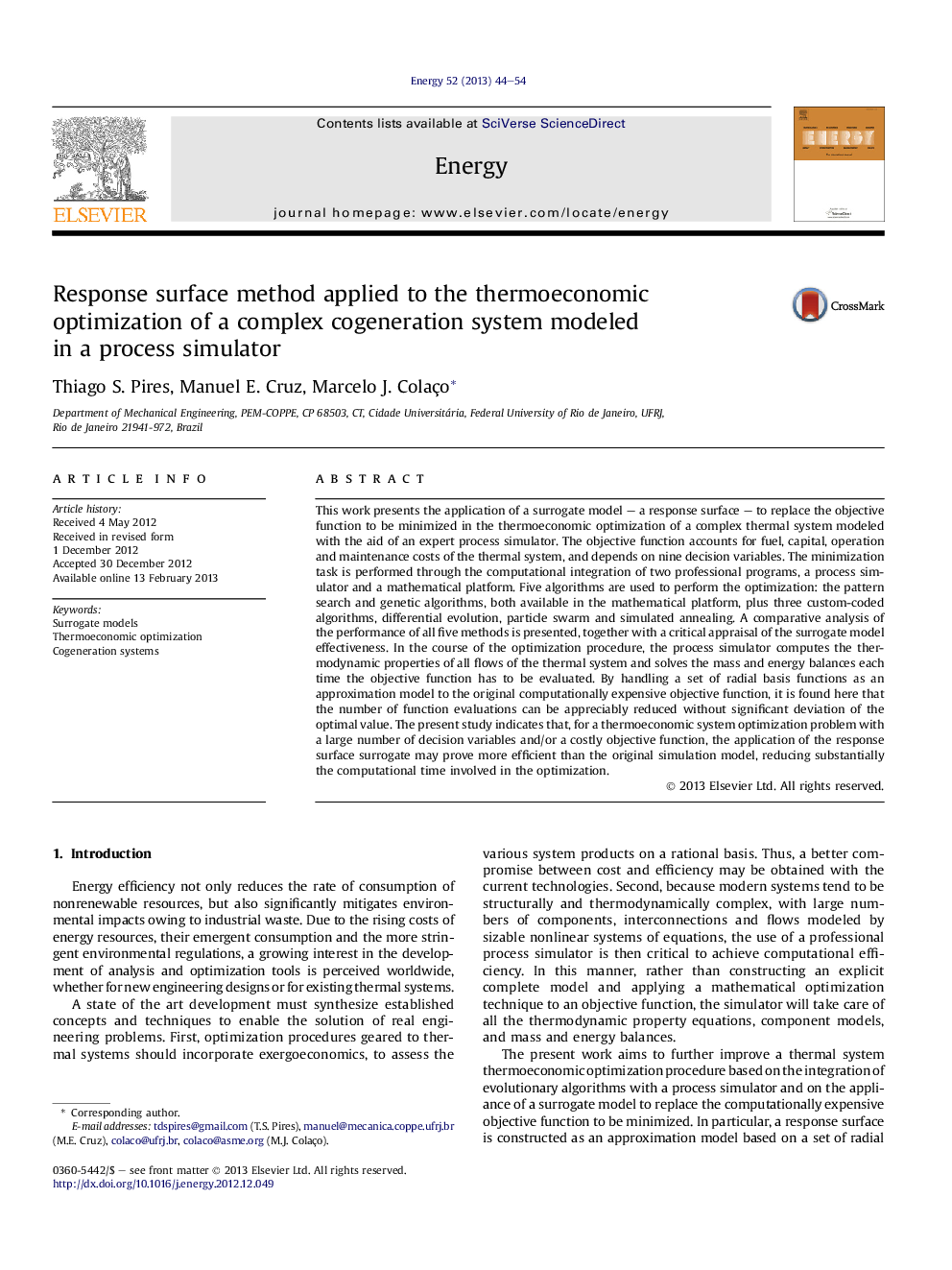| کد مقاله | کد نشریه | سال انتشار | مقاله انگلیسی | نسخه تمام متن |
|---|---|---|---|---|
| 1732826 | 1521494 | 2013 | 11 صفحه PDF | دانلود رایگان |

This work presents the application of a surrogate model – a response surface – to replace the objective function to be minimized in the thermoeconomic optimization of a complex thermal system modeled with the aid of an expert process simulator. The objective function accounts for fuel, capital, operation and maintenance costs of the thermal system, and depends on nine decision variables. The minimization task is performed through the computational integration of two professional programs, a process simulator and a mathematical platform. Five algorithms are used to perform the optimization: the pattern search and genetic algorithms, both available in the mathematical platform, plus three custom-coded algorithms, differential evolution, particle swarm and simulated annealing. A comparative analysis of the performance of all five methods is presented, together with a critical appraisal of the surrogate model effectiveness. In the course of the optimization procedure, the process simulator computes the thermodynamic properties of all flows of the thermal system and solves the mass and energy balances each time the objective function has to be evaluated. By handling a set of radial basis functions as an approximation model to the original computationally expensive objective function, it is found here that the number of function evaluations can be appreciably reduced without significant deviation of the optimal value. The present study indicates that, for a thermoeconomic system optimization problem with a large number of decision variables and/or a costly objective function, the application of the response surface surrogate may prove more efficient than the original simulation model, reducing substantially the computational time involved in the optimization.
► A successful response surface method was proposed.
► The surrogate model may be more efficient than the original simulation model.
► Relative differences of less than 5% were found for the surrogate model.
► Radial basis functions were tested with five well-known minimization algorithms.
Journal: Energy - Volume 52, 1 April 2013, Pages 44–54